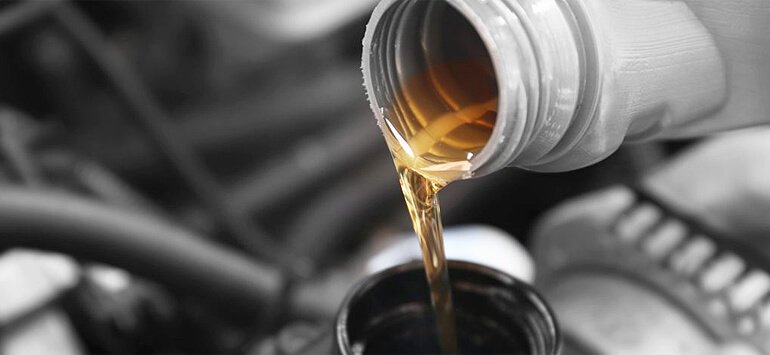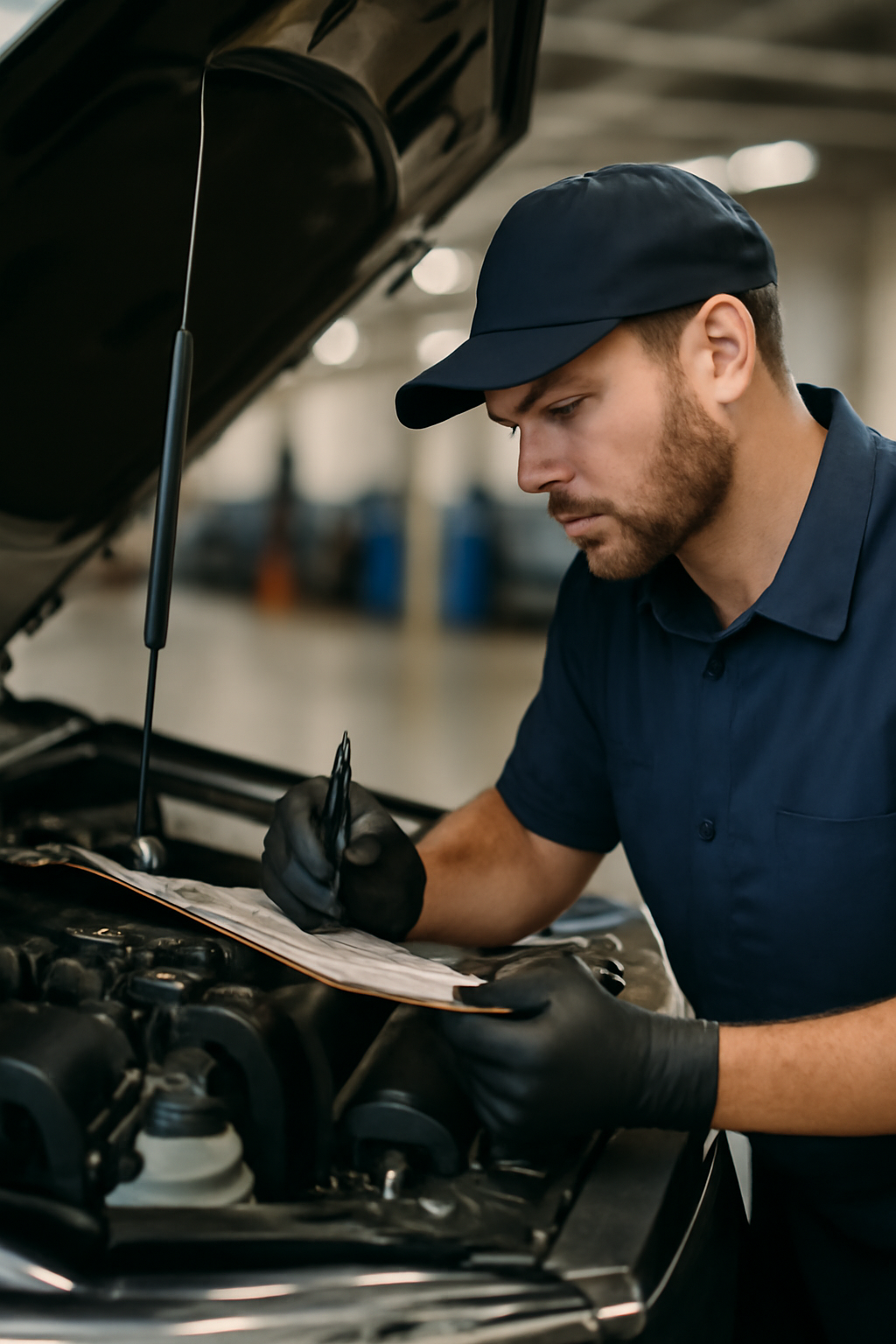Contacts Us
Have a Question?

Preventative Maintenance
General Preventative Maintenance for Cars: Ensuring Longevity and Reliability
Preventative maintenance is essential to keep your car running smoothly and to prevent unexpected repairs or breakdowns. Just like regular doctor check-ups keep our bodies healthy, regular car maintenance ensures that your vehicle performs at its best for as long as possible. By staying on top of routine tasks, drivers can avoid costly repairs and extend the lifespan of their vehicles. This article outlines the most important preventative maintenance tasks every car owner should follow to ensure their vehicle remains in good condition.
1. Oil and Oil Filter Changes
Arguably the most important part of car maintenance is changing the engine oil and the oil filter at regular intervals. Oil is crucial for lubricating the engine’s moving parts, reducing friction, and helping the engine operate efficiently. Over time, oil breaks down and becomes contaminated with debris, making it less effective.
How Often Should You Change Your Oil?
Generally, oil should be changed every 3,000 to 5,000 miles for conventional oil, or up to 10,000 miles for synthetic oil. However, always consult your vehicle’s owner manual for specific recommendations.
Signs Your Oil Needs Changing:
The oil change light comes on.
Engine running louder than usual.
Dark or dirty oil.
2. Check and Replace Air Filters
The air filter prevents dirt, dust, and debris from entering the engine, which helps the engine perform efficiently. Over time, these filters get clogged and must be replaced. A dirty air filter can cause your engine to work harder, reduce fuel efficiency, and lead to increased emissions.
How Often Should You Replace the Air Filter?
Most manufacturers recommend replacing the air filter every 12,000 to 15,000 miles, but this can vary depending on driving conditions. If you drive in dusty areas or make frequent short trips, you may need to replace it sooner.
Signs of a Clogged Air Filter:
Reduced engine power or acceleration.
Decreased fuel economy.
Black smoke from the exhaust.
3. Tire Maintenance: Rotation, Balancing, and Inflation
Tires are your vehicle’s only point of contact with the road, so keeping them in optimal condition is crucial for safety, performance, and fuel efficiency. Regular tire maintenance includes checking tire pressure, rotating tires, and balancing them.
Tire Pressure:
Tire pressure should be checked at least once a month, and the recommended pressure can be found in the owner’s manual or on the tire placard located on the driver’s side doorframe.
Low tire pressure can lead to uneven tire wear, decreased fuel efficiency, and poor handling.
Tire Rotation and Balancing:
Tires should be rotated every 6,000 to 8,000 miles to ensure even wear. This helps extend the life of your tires and improves handling.
Balancing ensures that the tires wear evenly and prevents vibration during driving.
Signs of Tire Issues:
Uneven tire wear.
Vibrations or pulling to one side when driving.

Trust Our Products
For over 60 years, Car Repair Service has been helping drivers across North America maintain their vehicles. With ASE-certified mechanics in all of our stores, we can take care of all of your auto repair and maintenance needs. From oil changes, filter replacements, and fluid flushes to brakes and brake repair, shocks and struts, muffler repair, tires, and wheel alignment, we’ve got you covered. Use the quick links in the gold bar to book an appointment at your Car Repair Service store today!4. Brake Inspection
Your car’s braking system is crucial to your safety, and routine inspections are necessary to ensure that it works properly. Over time, brake pads wear down, which can reduce braking efficiency and lead to expensive repairs if not addressed.
How Often Should You Check Brakes?
Have your brake pads checked every 12,000 miles or during each oil change.
Replace the brake pads every 25,000 to 50,000 miles, depending on the type of driving you do.
Signs You Need to Replace Brake Pads:
Squealing or grinding noises when braking.
Reduced stopping power or longer stopping distances.
Vibrations when braking.
5. Inspect and Replace the Battery
The car battery is responsible for powering your vehicle’s electrical components, including starting the engine. Over time, batteries degrade and lose their ability to hold a charge.
How Often Should You Replace the Battery?
Most car batteries last between 3 to 5 years, depending on usage and climate. In hot climates, batteries may degrade faster due to heat.
Signs You Need a New Battery:
Car is slow to start.
Electrical components malfunction or flicker.
Corrosion or leaking from the battery terminals.
6. Coolant System Maintenance
The cooling system prevents your engine from overheating, and the radiator fluid (coolant) plays a key role in maintaining the engine temperature. Over time, coolant can become contaminated, reducing its effectiveness.
How Often Should You Replace Coolant?
Typically, coolant should be replaced every 30,000 to 60,000 miles or every 2 to 4 years, depending on the type of coolant and vehicle.
Signs Your Cooling System Needs Maintenance:
Overheating engine.
Leaking coolant.
Unusual smells from the engine bay.
7. Change Transmission Fluid
Transmission fluid lubricates the transmission, helping it shift gears smoothly and preventing excessive wear on the transmission. If the fluid gets low or dirty, it can cause shifting problems and transmission failure.
How Often Should You Change Transmission Fluid?
For most vehicles, it’s recommended to change the transmission fluid every 30,000 to 60,000 miles. However, some modern cars may have longer intervals.
Signs You Need Transmission Fluid Change:
Difficulty shifting gears.
Slipping gears.
Unusual noises when the car is in gear.
8. Inspect Belts and Hoses
Belts and hoses are responsible for various engine components like the alternator, air conditioning, and cooling system. Over time, these parts can crack or wear out, leading to engine failure.
How Often Should You Inspect Belts and Hoses?
It’s recommended to inspect the belts and hoses at least once a year. Replace any worn or cracked belts immediately.
Signs of Worn Belts or Hoses:
Squealing noises from the engine.
Overheating engine or loss of power steering.
Visible cracks or fraying in the belts or hoses.
9. Lighting System Inspection
Check that all lights (headlights, brake lights, turn signals) are working correctly. Not only is this important for safety, but in some regions, it’s a legal requirement.
How Often Should You Inspect Your Lights?
It’s good practice to inspect the lighting system every 6 months or during routine maintenance checks.
Signs of Lighting Issues:
Dimming or flickering lights.
Burnt-out bulbs.
Malfunctioning turn signals or brake lights.
10. Windshield Wiper Blades and Fluid
Visibility is crucial for safe driving, so ensuring that your wiper blades and fluid are functioning correctly is essential. Over time, wiper blades can become brittle and ineffective, especially in hot climates or during winter months.
How Often Should You Replace Wiper Blades?
Replace wiper blades every 6 to 12 months, or sooner if you notice streaking or skipping.
Signs You Need New Wiper Blades:
Streaking on the windshield.
Skipping or chattering noises when wiping.
Broken or cracked wiper blades.
Conclusion
Routine maintenance is the key to preventing unexpected breakdowns and costly repairs, extending the lifespan of your vehicle. Following the manufacturer’s recommendations for regular check-ups and making sure you perform essential tasks such as changing the oil, inspecting the brakes, and checking tire pressure will ensure that your car runs smoothly for years to come. Regular inspections can also provide peace of mind, allowing you to catch potential problems early and address them before they become serious issues. Don’t wait until it’s too late—start practicing preventative maintenance today.